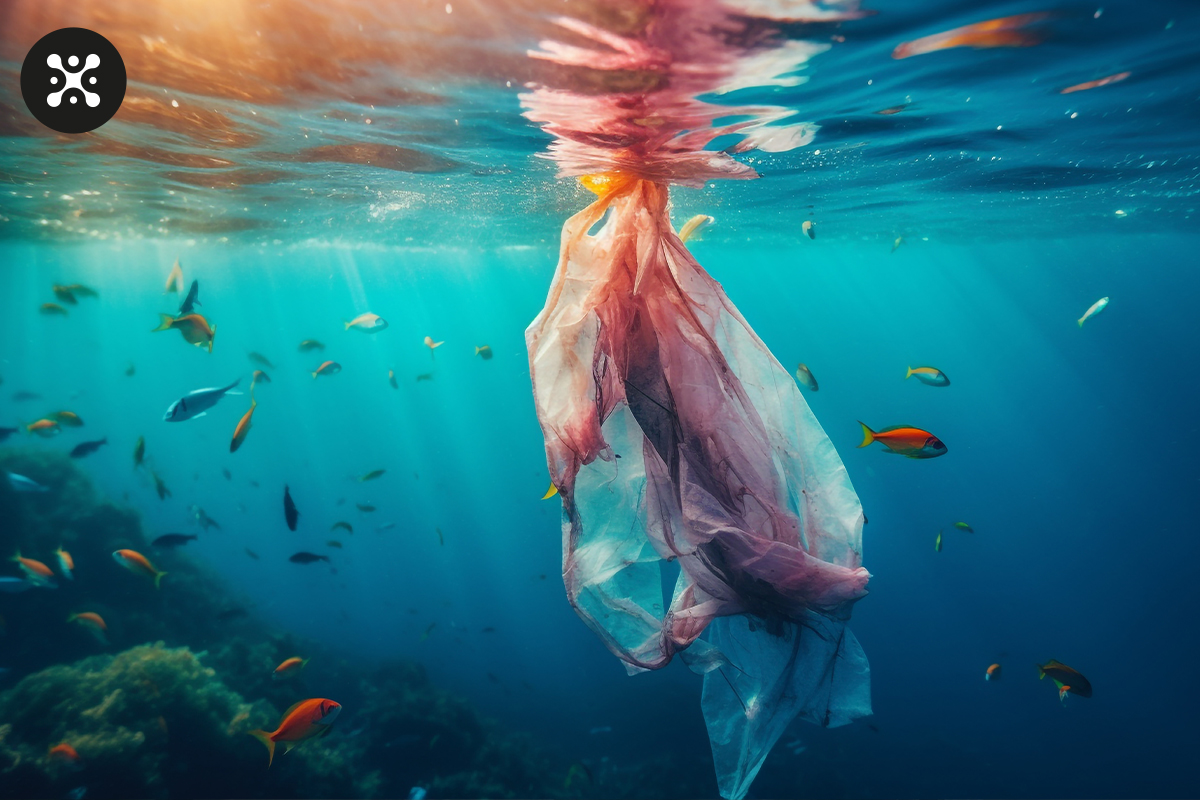A request to all people with a delicate psyche do not read this article. But for shopaholics, we have found a solution for you, how to make it easier to choose clothes or get rid of this habit forever. Well, and of course, everyone who respects themselves, nature and the planet as a whole should also dive into this topic.
What is "fast fashion"?
"Fast fashion" appeared relatively recently. Many brands strive to sell their clothes as quickly as possible and in the largest possible quantities. They release new collections every month, sometimes every few weeks, creating inexpensive things.
There is a devaluation of more expensive, high-quality branded items, because people, leaving a branded store, do not understand why it is so expensive. If fast fashion offers similar models much cheaper.
What is the connection between fast fashion and ecology?
The fashion industry is one of the main polluters of our planet. Clothing production is responsible for 10% of all CO2 emissions per year. It also ranks second in the use of fresh water and is responsible for 20% of all industrial water pollution.
Slowdown of development in general. The production of fast clothes often involves low-paid labor, almost in slave conditions - women and children. For example, Bangladesh is home to the world's largest garment factories. Due to unethical working conditions, in 2013 there was a collapse at Rana Plaza, as a result of which 1,132 workers of fast fashion factories died. These employees produced products for some of the leading fashion brands.

The main goal of fast fashion is to produce products as quickly as possible so that customers can purchase them while they are at their peak. Usually these are clothes that we buy for one season, such "disposable" things that we don't mind throwing away later. This is a key part of the toxic overproduction and consumption that has made fashion one of the biggest polluters on the planet.
That is why ecologists are increasingly saying today that drastic changes are needed.
What are the negative consequences of fast fashion
In order not to be verbose, let's show some statistics.
Every year, the textile industry consumes:
- 132,000,000 tons of coal
- from 6 to 9 billion liters of water

Some more impressive facts about the harmfulness of fast fashion:
- 60% of clothes are simply thrown away by people within the first year after purchase.
- Clothing production is responsible for 10% of all CO2 emissions per year. According to experts' calculations, in 2050 the increase will reach 25%.
- For the full production cycle of one cotton T-shirt, 2,700 liters of water are consumed - this amount is consumed by a person in three years of life. It is worth noting that light industry uses dyes and other chemicals that enter the soil, polluting it.
- Clothes are sewn mainly from cotton and polyester. The decomposition of the latter is about 200 years. During each wash, microscopic plastic fibers are washed out of synthetic clothing, which cleaning systems cannot capture, and therefore these fibers end up in the world's oceans.
- More than a third of all microplastics in the ocean come from synthetic textiles. Polyester, viscose, nylon, acrylic, spandex or faux fur emit tiny plastic particles when worn or washed.
- Polyester takes more than 200 years to decompose. Every year, about 70 million barrels of crude oil are used to make the world's most popular material, polyester. Almost half of the fabrics used in fast fashion retail come from petrochemicals (and oil is a non-renewable natural resource).
- According to biologists, microplastics were found in the stomachs of 73% of fish in the northwestern part of the Atlantic. And then this one gets to a person who eats fish.
"Fast fashion" pollutes our planet, while not allocating a budget for the disposal of its products. In 2019, the "Fashion Pact G7" was signed and the pages of fashion magazines began to simply "shout" about conscious consumption, recycling and recycling of clothes, environmental friendliness and ethics of goods, about the need for smart consumption and the second-hand trend.
Conscious fashion is in trend today. Why is it important for people?
Conscious fashion is a careful attitude towards our planet, nature and people. Ideally, designers and clothing companies should take care of all stages of production and consumption, from the creation of the fabric to the disposal of the product. At no stage should the planet's ecosystem be harmed. But the reality is different - you saw the statistics above.
It`s worth thinking about environmental problems. This applies to each of us, because we are consumers of certain brands and by buying these things we support fast fashion.
What to do? We should not give up clothes and fashion
Finnish researchers Maarit Aakko and Ritva Koskennurmi-Sivonen systematized the rules of sustainable fashion. They suggest that designers must:
- chose ecological materials or fabrics made from recycled fibers, take care of waste processing;
- use only materials that can be easily recycled;
- safe dyeing and washing were used;
- promotesafety for ecology, urge people to take care of nature and the planet;
- use a zero-waste cut, transparent labor organization, fair pay, transparent supply chains;

- use participatory design;
- conserve resources, use different ways to extend the life of clothes, chose local resources to reduce transportation costs;
- draw people's attention to conscious fashion;
Conscious or slow fashion has been in trend for several years. Upcycling is popular in many countries today.
"Upcycling" is the creation of clothes from used items. It takes a lot of effort to scale this process, but each of us can do it at home - breathe new life into old things. For example, to create one new thing from two or three things. Re-stitch, repair, add applications or patches and it can even become a trend.
For some people, this method may remind of Soviet times and advice from magazines such as "Selyanka" and "Robitnytsia", when pillowcases were made from used men's shirts, and children's clothes were made from adult items. It was then due to a total shortage, but now it is a must-have for sustainable fashion/lifestyle bloggers with hundreds of thousands of followers. And these ideas are very interesting.
How does sustainable fashion affect fashion trends? And what to stop following fashion?
Stop thinking that being fashion conscious forces you to wear only what's in your closet. There are many small and easy changes that you can do. But they will be of great importance for the environment, both socially and ecologically.
How to be trendy and environmentally friendly:
- Create a capsule wardrobe. Try to buy few things, but so that they all go together. Plus - it is better to take something of higher quality and more expensive than "a lot and stupid". We often buy on impulse, which is why every year about 10.5 million tons of clothing in the United States end up in landfills and increase the level of global textile waste.
- Choose things that are made more ethically, check the labels and think about the warehouse and the manufacturing factory.
- Think about where and how clothes are made, what parts are made of. Avoid synthetics whenever possible, this material is petroleum-based, just like polyester and nylon, which are actually plastics. Every time, when washed, these fabrics lose thousands of microfibers, which eventually pollute rivers and oceans.
- Think about what could be re-stitched, reworked according to fashion trends. One creatively repaired outfit won't save the planet, but it might inspire three other people to give their own clothes a new lease of life.
- Find places where things can be handed over for recycling. For this, it is worth looking on the Internet. Most likely, there are such points in many cities not far from us. And if not, organize such places.
- Don't buy festive clothes, but rent them.
- Wash clothes using gentle detergents, which will help extend their service life.
- You can donate clothes in good condition to an orphanage or a nursing home, or to other institutions where it is appropriate and necessary.
Progressive girls now follow global trends: sustainable lifestyle, zero waste traveling.

A few more shocking facts to get you thinking
- Today, textiles make up about 5% of all solid household waste. Natural fabrics decompose quite quickly: cotton - 6 months, wool - 1 year, wool coat - up to 5 years, genuine leather - 50-80 years. The complete decomposition of synthetic fabrics takes much longer. It can be up to 200 or more years.
- The fashion industry already boasts many famous designers, models and celebrities who are championing sustainable fashion.
- The rise of fast fashion over the past 10 years can be attributed to social media and celebrity or influencer culture. Manufacturers of fast fashion monitor the reaction of followers in social networks to a particular image. If followers like it, then fast fashion brands start a race to bring the style to customers in a matter of weeks.
However, the global problem of environmental pollution will exist until all of humanity comes together to solve it.
Although many note the negative consequences of fast fashion, it is clear that it is here to stay. We can still enjoy the benefits of fast fashion by doing everything we can to mitigate its harmful effects. For example, buy less, but better quality and wear longer than one season. And also use the tips that we described in this article. In this way, make a significant contribution to the preservation of the ecology of our magnificent and beautiful planet. And the main thing is not to leave this work to our children, grandchildren, great-grandchildren... It is important to be conscious and careful, nature will respond in kind.













































